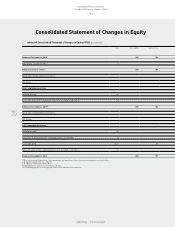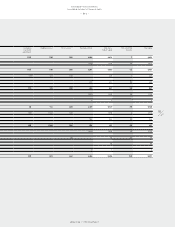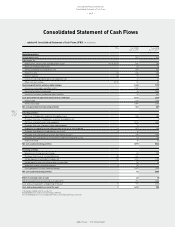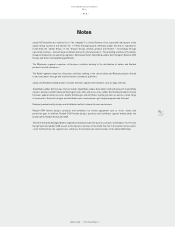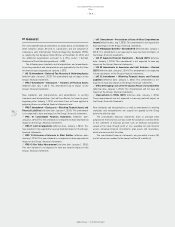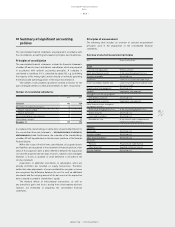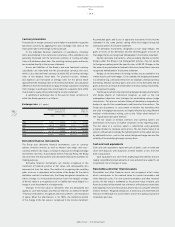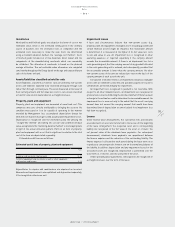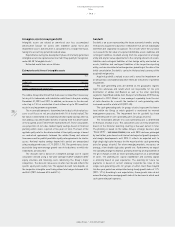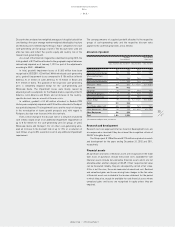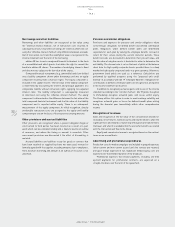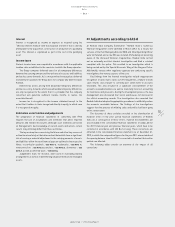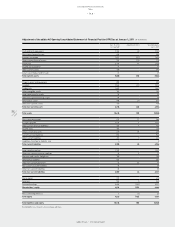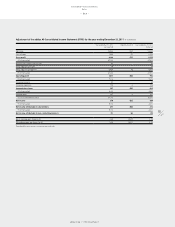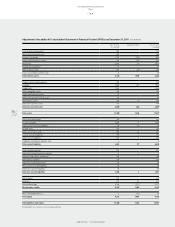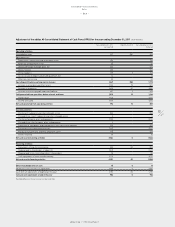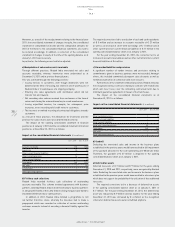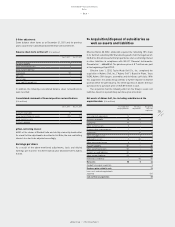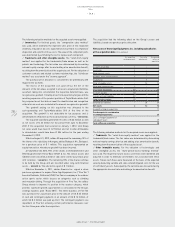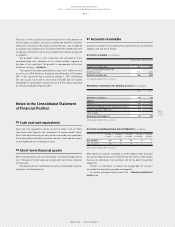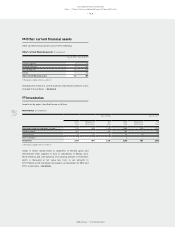Reebok 2012 Annual Report Download - page 224
Download and view the complete annual report
Please find page 224 of the 2012 Reebok annual report below. You can navigate through the pages in the report by either clicking on the pages listed below, or by using the keyword search tool below to find specific information within the annual report.
adidas Group
/
2012 Annual Report
Consolidated Financial Statements
202
2012
Notes
/
04.8
/
Borrowings and other liabilities
Borrowings and other liabilities are recognised at fair value using
the “effective interest method”, net of transaction costs incurred. In
subsequent periods, long-term borrowings are stated at amortised cost
using the “effective interest method”. Any difference between proceeds
(net of transaction costs) and the redemption value is recognised in the
income statement over the term of the borrowing.
adidas AG has issued a compound financial instrument in the form
of a convertible bond which grants the holder the right to convert the
bond into adidas AG shares. The number of underlying shares is fixed
and does not vary subject to the fair value of the shares.
Compound financial instruments (e.g. convertible bonds) are divided
into a liability component shown under borrowings and into an equity
component resulting from conversion rights. The equity component is
included in the capital reserve. The fair value of the liability component
is determined by discounting the interest and principal payments of a
comparable liability without conversion rights, applying risk-adjusted
interest rates. The liability component is subsequently measured
at amortised cost using the “effective interest method”. The equity
component is determined as the difference between the fair value of the
total compound financial instrument and the fair value of the liability
component and is reported within equity. There is no subsequent
measurement of the equity component. At initial recognition, directly
attributable transaction costs are assigned to the equity and liability
component pro rata on the basis of the respective carrying amounts.
Other provisions and accrued liabilities
Other provisions are recognised where a present obligation (legal or
constructive) to third parties has been incurred as a result of a past
event which can be estimated reliably and is likely to lead to an outflow
of resources, and where the timing or amount is uncertain. Other
non-current provisions are discounted if the effect of discounting is
material.
Accrued liabilities are liabilities to pay for goods or services that
have been received or supplied but have not been paid, invoiced or
formally agreed with the supplier, including amounts due to employees.
Here, however, the timing and amount of an outflow of resources is not
uncertain.
Pensions and similar obligations
Provisions and expenses for pensions and similar obligations relate
to the Group’s obligations for defined benefit and defined contribution
plans. Obligations under defined benefit plans are determined
separately for each plan by valuing the employee benefits accrued in
return for their service during the current and prior periods. These
benefit accruals are discounted to determine their present value, and
the fair value of any plan assets is deducted in order to determine the
net liability. The discount rate is set on the basis of yields at the balance
sheet date for high-quality corporate bonds provided there is a deep
market for high-quality corporate bonds in a given currency. Otherwise,
government bond yields are used as a reference. Calculations are
performed by qualified actuaries using the “projected unit credit
method” in accordance with IAS 19 “Employee Benefits”. Obligations for
contributions to defined contribution plans are recognised as an expense
in the income statement as incurred.
In addition to recognising actuarial gains and losses in the income
statement according to the “corridor method”, IAS 19 grants the option
to immediately recognise actuarial gains and losses within equity.
The Group utilises this option in order to avoid earnings volatility and
recognises actuarial gains or losses for defined benefit plans arising
during the financial year immediately within other comprehensive
income.
Recognition of revenues
Sales are recognised at the fair value of the consideration received or
receivable, net of returns, trade discounts and volume rebates, when the
significant risks and rewards of ownership of the goods are transferred to
the buyer, and when it is probable that the economic benefits associated
with the transaction will flow to the Group.
Royalty and commission income is recognised based on the contract
terms on an accrual basis.
Advertising and promotional expenditures
Production costs for media campaigns are included in prepaid expenses
(other current and non-current assets) until the services are received,
and upon receipt expensed in full. Significant media buying costs are
expensed over the intended duration of the broadcast.
Promotional expenses that involve payments, including one-time
up-front payments for promotional contracts, are expensed on a
straight-line basis over the term of the agreement.


